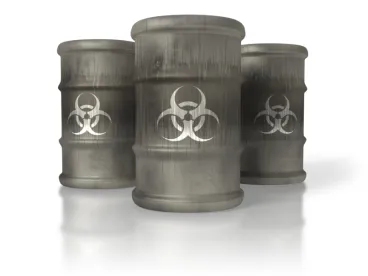The California Office of Environmental Health Hazard Assessment (“OEHHA”) issued a pre-regulatory proposal for new regulations that would change the requirements for warnings provided under Proposition 65 for exposures to certain chemicals identified by the State to cause cancer or reproductive toxicity. The “informal” pre-regulatory draft, if adopted as proposed, would overhaul the requirements relating to Proposition 65 warnings for manufacturers, retailers, and service-providers doing business in the State. Notably, the proposal would require warnings to specify certain listed chemicals, mandate specific warning language for certain exposure scenarios, and require businesses to submit extensive product and exposure-related information to OEHHA. The comment period on the pre-regulatory draft will be open until May 14, 2014.
During a April 14, 2014 Pre-Regulatory Workshop, OEHHA stated that the aim of the regulatory revision is to provide clarity to businesses regarding their compliance obligations under Proposition 65 and to provide more meaningful warnings to the public. OEHHA acknowledged that the proposal as drafted would impose significant new burdens on businesses. A number of stakeholders expressed concern that the pre-regulatory draft introduces complexities that may become compliance pitfalls and increase the risk of private litigation. OEHHA representatives emphasized that the pre-regulatory proposal is the agency’s first attempt at improving the Proposition 65 warning requirements and that the text of the regulation may change substantially prior to the initiation of formal rulemaking (anticipated in Summer of 2014).
The pre-regulatory proposal was released by OEHHA on March 7, 2014, the week before the California Department of Toxic Substances Control(“DTSC”) announced its initial draft “priority products” under the State’s Safer Consumer Products regulations. Together with DTSC’s new Safer Consumer Products framework, OEHHA’s potential revision of the Proposition 65 warning regulations signals a strong focus by California regulators related to reducing potential consumer exposures from chemicals in products. The full text of the pre-regulatory proposal, and other information about OEHHA’s rulemaking process, is available here.
Proposition 65 Background—Existing Warning Requirements
California’s Proposition 65 requires OEHHA to publish a list of chemicals known to the State to cause cancer or developmental or reproductive toxicity. The law requires businesses offering products or services in California that would expose a person to a listed chemical above a safe level to provide a warning prior to such exposure. OEHHA’s current Proposition 65 regulations identify “safe harbor” levels of exposure for some of the chemicals listed and establish a process pursuant to which businesses may calculate an estimated safe harbor level in the absence of such an undertaking by OEHHA.
Key Changes in OEHHA’s Pre-Regulatory Proposal
The pre-regulatory proposal includes several new and expanded obligations, including the following:
- Reporting Requirements. For every product or service that is accompanied by a warning, the business with the obligation to warn would also be required to report detailed information to OEHHA, including the specific identity of the chemical(s) that the warning is intended to cover; the anticipated pathways of exposure to the listed chemicals; and “reasonably available” information concerning the anticipated level of human exposure to the listed chemicals, if known. The reported information would ultimately be published by OEHHA on a publicly-available database. This reporting element represents a substantively new, and potentially burdensome, obligation. Under the existing regulations, businesses that provide an adequate warning accompanying their products or services are not required to identify specific listed chemicals or disclose anticipated exposure pathways and they have no obligation to report any information to OEHHA.
- Warnings would be Required to Identify Certain Listed Chemicals. Warnings for products and services that would expose a person above a safe level to one or more specified chemicals on the Proposition 65 list would be required to identify those chemicals in the warning. These chemicals are acrylamide, arsenic, benzene, cadmuim, chlorinated tris, 1,4 dioxane, formaldehyde, lead, mercury, phthalates, tobacco smoke and toluene. The requirement to specify certain chemicals would be a significant departure from the current regulations, which only require the warning to indicate that the product contains a chemical known to the State of California to cause cancer and/or reproductive harm, without specifically identifying the chemical or chemicals.
- Clearer and More Detailed Requirements for Form and Substance of Warnings. In addition to specifically identifying the chemicals listed above, all warnings would need to meet detailed requirements concerning format (size, graphic layout, font, etc.) and substance (text of the warning). These requirements would vary for different categories of products and services, such as food products, prescription drugs and medical devices, dental care, and alcoholic beverages. There would be additional requirements for warnings regarding exposure to chemicals in various environments, such as restaurants, hotels and apartments, parking facilities, and amusement parks. For consumer products other than foods, prescription drugs and medical devices, or dental services, the warning would also be required to include the international health hazard symbol:

- Primary Responsibility for Warnings Assigned to Product Manufacturers; Retailers Required to Disclose Identity of Manufacturers. Language in the pre-regulatory draft would assign primary responsibility for consumer product and food warnings to the product manufacturer, producer, distributor or packager, except where the retailer is selling a product under its own in-house label. Under the draft, retailers would also be required to disclose the name and contact information of the manufacturer, producer, distributor or packager of the consumer product to OEHHA, the Attorney General and any member of the public upon request, raising potential issues regarding confidential business information.
- New Warning Requirements for Occupational Exposures to Products. The pre-regulatory draft prescribes specific elements that would be required for occupational exposures to products. The draft language includes the limitation, “except where prohibited by federal or state law,” but does not explicitly acknowledge that California lacks authority to require out-of-state manufacturers to provide warnings for occupational exposures. The pre-regulatory draft also includes a placeholder for a section on warnings for specific occupational exposures.
- Opportunity to Cure. Under the pre-regulatory proposal, small retailers with fewer than 25 employees would, under limited circumstances, be given an opportunity to quickly cure “minor violations” of the regulations, such as inadvertent obstruction of a warning sign.
If adopted, the pre-regulatory proposal could change the strategies that businesses use to comply with Proposition 65. Under existing regulations, some businesses that supply products containing a listed chemical have found it prudent, in light of uncertainties regarding consumer use patterns and exposure thresholds, to simply provide a Proposition 65-compliant warning rather than undertake a costly exposure assessment to demonstrate that the product or service does not pose a significant health risk. This would likely change under the pre-regulatory proposal, which would impose require businesses providing warnings to generate, analyze and report detailed information to OEHHA concerning the “pathways” of exposure to listed chemicals found in products and services.
Next Steps
- Stakeholders may submit comments to OEHHA on the pre-regulatory proposal until May 14, 2014.
- OEHHA will consider comments and has indicated that the agency may schedule additional workshops or meetings with particular industries or groups of stakeholders.
- OEHHA plans to initiate a formal regulatory process in Summer of 2014, which will include a public comment period.
- OEHHA plans to complete the regulatory process and issue final regulations by Summer of 2015.





 />i
/>i

